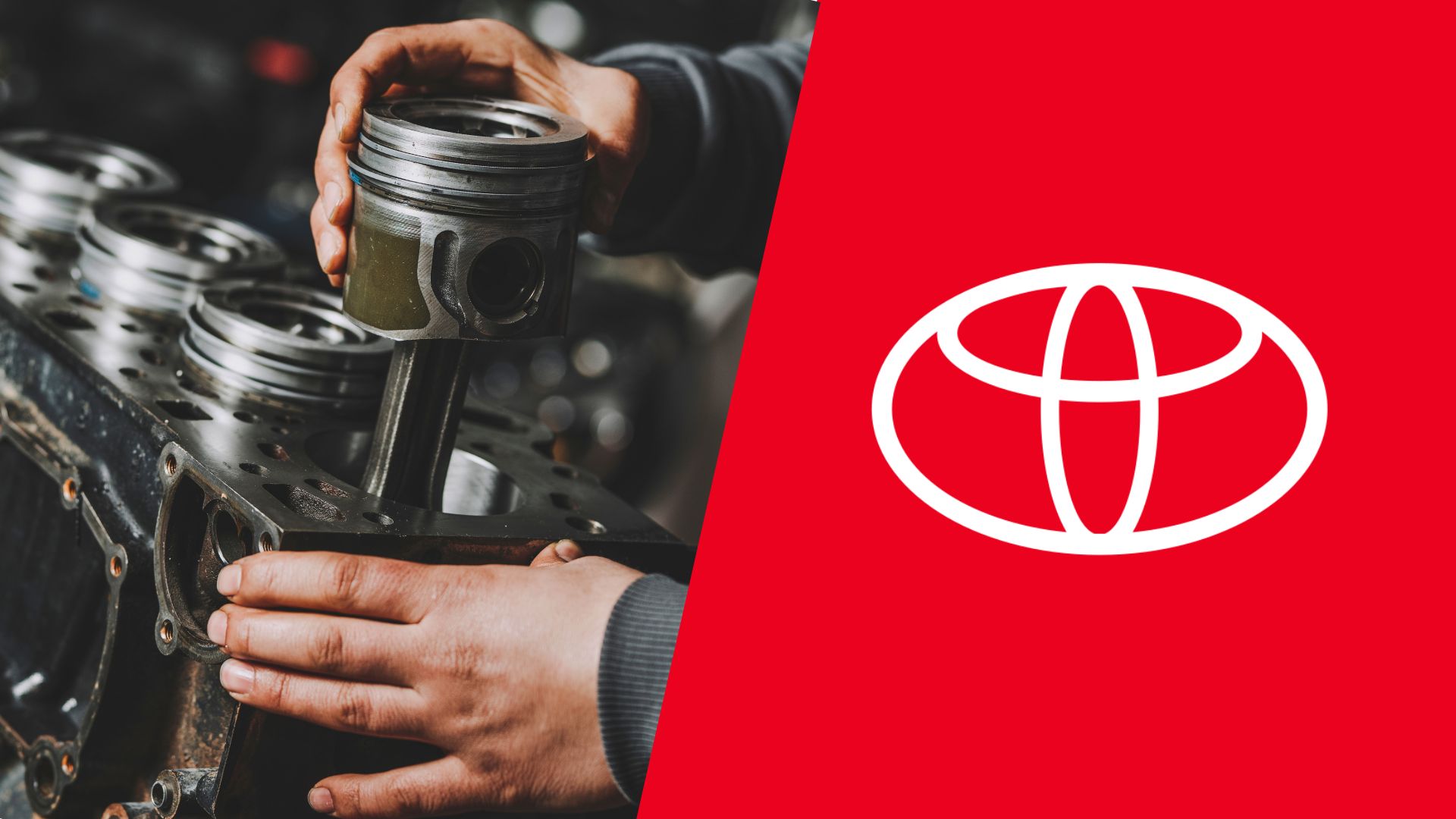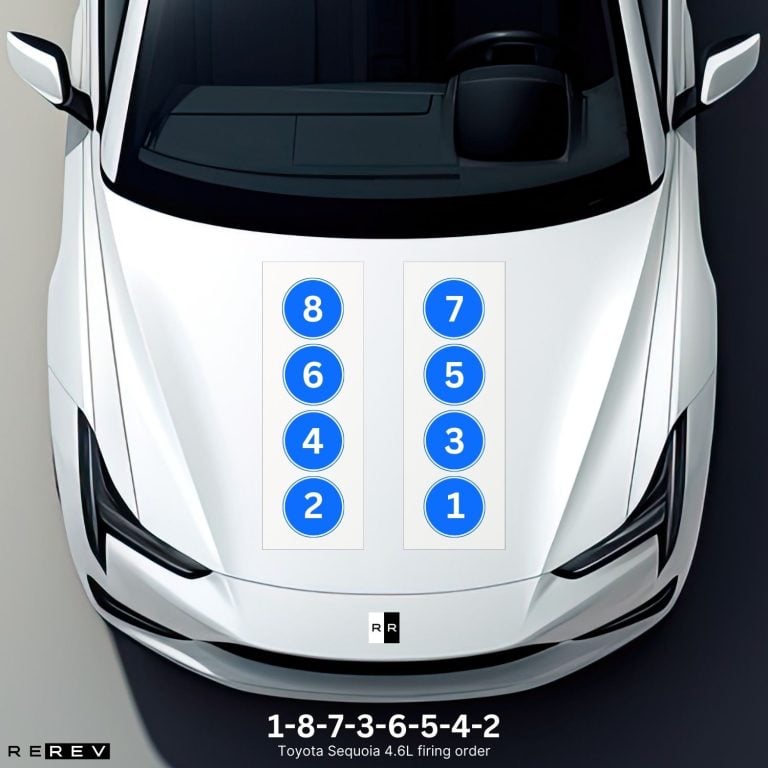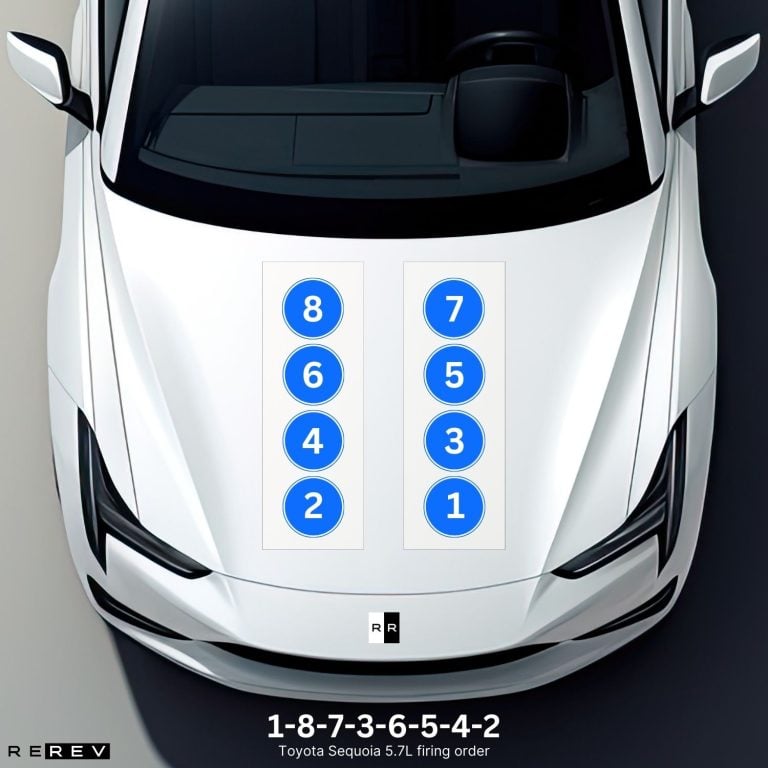Toyota Sequoia (2000-2023) firing order — diagram & guide

Back in the late 1990s, Toyota announced the introduction of a new full-size SUV that would be exclusive to the US market, so the Sequoia was born. Fast forward two decades and we have three generations of the vehicle all of which have been deemed reliable by automotive experts.
However, there’s just so much you can do about engine maintenance, and if you know the Toyota Sequoia (2000-2023) firing order suitable for your car, you can extend the life cycle of your car. Precisely, it’s possible to examine the engine’s cylinders for diagnosing misfires and replacing some parts that wear off over time, and we’ll tell you exactly how through the lens of Sequoia engines over the years.
| SEQUOIA YEARS | ENGINE | FIRING ORDER |
|---|---|---|
| 1st Gen (2000-2006) | 4.7L V8 | 1-8-4-3-6-5-7-2 |
| 2nd Gen (2007-2021) | 4.6L V8 | 1-8-7-3-6-5-4-2 |
| 4.7L V8 | 1-8-4-3-6-5-7-2 | |
| 5.7L V8 | 1-8-7-3-6-5-4-2 | |
| 3rd Gen (2022-present) | 3.4L Twin-Turbo V6 | 1-2-3-4-5-6 |
First-generation Toyota Sequoia (2000-2006) firing order
Once the Sequoia appeared as a model, Toyota only used a single available engine option and that’s the 4.7-liter V8 engine. This one proved to be pretty reliable and it stuck around for almost 20 years in the lineup, so let’s see the firing order and specs of it.
Toyota Sequoia 4.7L firing order

To start, the Toyota Sequoia 4.7L firing order is 1-8-4-3-6-5-7-2 and it’s a different firing pattern than what other V8s offered later throughout the production have used. So, you could say it’s crucial to know the precise firing order for this one if you happen to own a 4.7L Sequoia.
This engine has two cylinder banks with four cylinders each, and the first cylinder is located as the one closest to the radiator on the driver’s side. Other driver’s side cylinders are 3, 5, and 7, while the passenger’s side cylinders are 2, 4, 6, and 8 looking at the engine front to rear.
Second-generation Toyota Sequoia (2007-2021) firing order
While the main 4.7-liter V8 from the first-gen Sequoia remained an option for the second-gen model, we’ve also received quite a few updates here. So, there are two more V8 engines we need to discuss and those have a different firing order from that of a 4.7L Sequoia.
Toyota Sequoia 4.6L firing order

As an engine pretty similar to the first one we’ve discussed, there’s a 4.6-liter V8 used in the second-gen Sequoia. The Toyota Sequoia 4.6L firing order is 1-8-7-3-6-5-4-2 and you can see by that alone how this one differs from the 4.7L engine.
However, these still have the same cylinder arrangement, so the driver’s side cylinder bank houses cylinders 1, 3, 5, and 7, while the passenger’s side bank includes cylinders 2, 4, 6, and 8.
Toyota Sequoia 5.7L firing order

The firing order of the 5.7-liter Toyota Sequoia is 1-8-7-3-6-5-4-2 as well, so these two engines are pretty similar in that sense.
Once again, Toyota has used the same base engine block which means that the cylinder positions are the same as for the previous two V8 engines we’ve discussed, with the first cylinder as the front-most one on the driver’s side.
Third-generation Toyota Sequoia (2022-present) firing order
Finally, the third-gen Sequoia model features a unique 3.4-liter Twin-turbo V6 engine and this one is the first of its kind used in large utility vehicles and trucks. It’s based on the earlier 3.4-liter Toyota V6 but this time forced induction makes up for the lack of capacity, which is why Toyota decided to ditch all the other V8 options.
Toyota Sequoia 3.4L twin-turbo firing order

The Toyota Sequoia 3.4L twin-turbo firing order is 1-2-3-4-5-6 and this engine is a transverse turbo V6. That means you’ll have two cylinder banks, but they will be a lower and an upper one this time, unlike the “regular” left and right banks.
So, the first cylinder of this engine is in the upper bank along with cylinders 3 and 5, while the lower bank houses cylinders 2, 4, and 6. In this case, the engine’s cylinders are numbered left to right.
Our take
Overall, the Toyota Sequoia has pretty durable V8s and the new 3.4-liter Twin-turbo engine doesn’t seem any less dependable either. So, if you own any of the Sequoia model years through the generations, we hope you’ll find our guide helpful in making the most out of it and ensuring that your engine runs as smoothly as on day one.